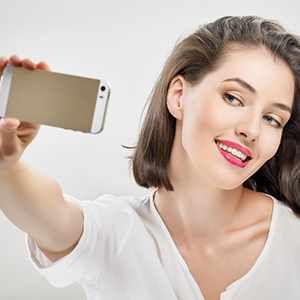The Fashion Institute of Technology in New York City has long been an incubator shaping minds whose ideas influence the beauty industry. As part of the Industry Advisory board for the Cosmetics and Fragrance Marketing and Management Program, we had the privilege of attending the annual Capstone Research Presentation. The final project was “The Future of Brands” – a look at the roles brands currently play and how they will impact a consumer’s purchasing choice in the future. Will they adapt? Will they continue to exist? This made us ask the question: Who is in control of their destiny? Not long into the presentation, it was clear—the consumer. Not just any consumer, the millennial consumer.
Technology is KEY, customization is a MUST
Technology continues to impact how and where millennials purchase. They value experience over material goods, but expect them to go hand in hand. They want low prices, high value, and all of it quickly. If their friends love something, then they do too. Their opinion counts the most, and trust and transparency is key. They expect brands to be honest. If you are loyal to them, they’ll be loyal to you. The devices they hold in their hands have the power to turn brands into household names, but can also ruin them in 140 characters or less. How can brands capture this generation of gamechangers?
In today’s world, brands need to create personalized experiences or risk widening the connection gap. Indies continue to make waves across the beauty industry, stealing millennials’ hearts with limited edition collections, fun packages, and innovative products at affordable prices. Often called beauty disruptors, these niche brands illustrate that consumers seek products made “for me.” By moving from an “Internet of Things” to an “Internet of Me” mentality, brands offer the chance to change a consumer’s way of life. This creates personalization, but at scale. By treating each consumer as a market of one, they are often more drawn to why a product is meant for them versus what the product is or does.
Brick and mortar needs a paradigm shift
With e-commerce accounting for half of the sales for the direct channel, according to our soon-to-be-published Beauty Retailing USA: Channel Analysis and Opportunities, online shopping is here to stay. The “If you build it, they will come” mentality no longer works. Retailers needs to evolve. The key is finding a balance that differentiates them from the past while preserving the brand’s DNA. In-store experiences are the key to driving this hyperconnected generation back into stores.
Salesperson = micro-influencer: Reinvent the role of beauty advisors. Retailers need to invest in training and education that focuses on product knowledge, technology, and brand DNA.
Social spaces: Beauty retailers can offer space to be used for social gatherings. Imagine Sephora or Ulta with private lounges where, for a fee, guests can host events while experiencing the goods and services of the retailer.
Think locally: Retailers convert usable store space into areas connecting them with their local community. Staples recently teamed up with Massachusetts’ co-working network Workbar to create a new kind of co-working experience inside the store.
So, what is the future of brands? Interaction creates understanding. Both brands and retailers need to create personal connections and valuable experiences for the customer. Those who best understand their consumers will find it the easiest to adapt.
For expert predictions on the future of beauty, please consult Kline’s forthcoming Cosmetics & Toiletries USA and Beauty Retailing USA: Channel Analysis and Opportunities reports, which analyze beauty brands and retailers alike to provide a 360-degree view of the entire beauty industry in the United States.
Written by Linda Viglione, Account Manager, Kline Consumer Products

